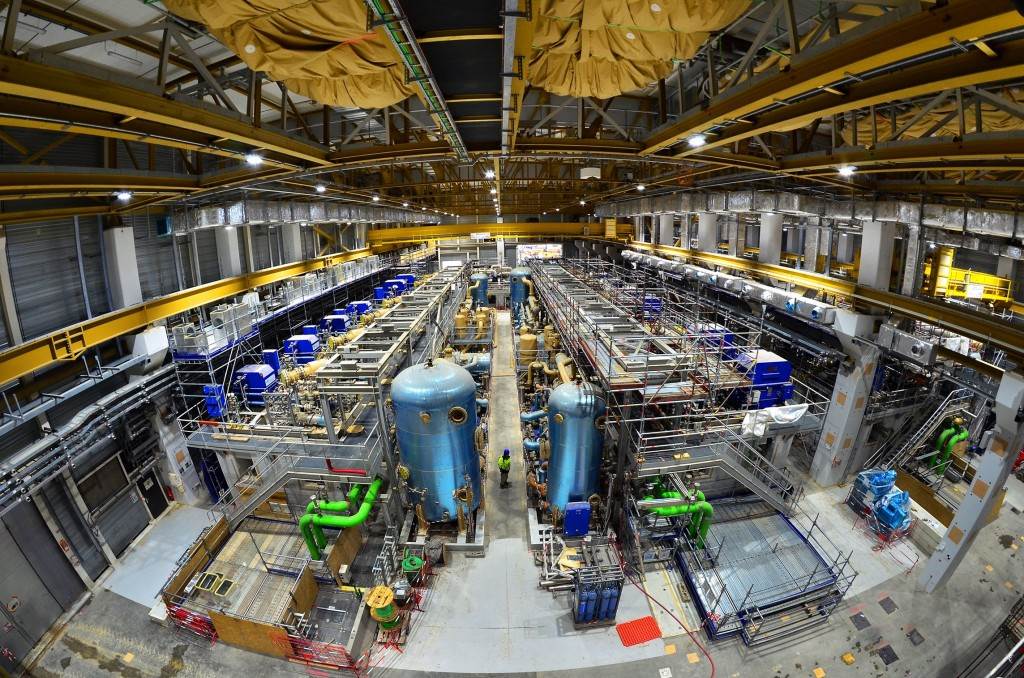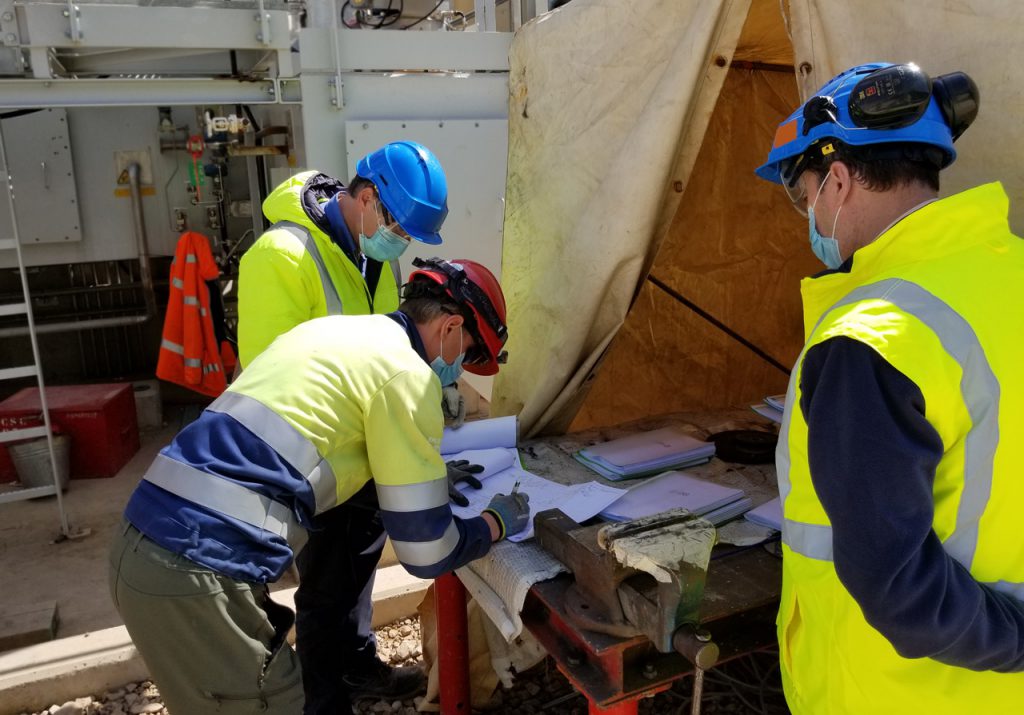ITER Cryoplant passes pressure tests

The ITER Cryoplant will provide cooling fluids to 10,000 tonnes of superconducting magnets, eight massive cryopumps, and thousands of square metres of thermal shielding. Cadarache, September 2019. © ITER Organization
The progress at the ITER Cryoplant continues at a good pace. After the installation of the piping and its welding, the completion of pressure tests is the last big milestone before the end of the mechanical works in the facility. This massive refrigerator will soon be ready to keep ITER superconductive magnets and other components at the right temperature to perform the world’s biggest fusion experiment.
More than 100 physical pressure tests have been carried out since September 2019. They involve injecting gas into closed pipelines and mechanical assemblies to see if they withstand a higher pressure than the usual one at which they will operate. Some safety measures are needed: “Pneumatic tests pose a risk because, if there is a failure, the energy stored in the compressed gas could be suddenly released. To avoid accidents, we calculate an exclusion zone where no people may be present during testing,” explains Roberto López, Momentum Pneumatic Pressure Test Coordinator.
A thorough inspection and documentation work is performed before experts run every test. IREM, Air Liquide, Momentum and the joint F4E-ITER Organization Cryogenics Team at Cadarache work closely to ensure that each piece and every person are where they should be. At 18:00, with all the preliminary checks performed, and the spotters making sure that nobody enters the exclusion zone, the test starts. It will run until 22:00.
The gas is first injected at a low pressure. If everything is fine, engineers set a higher pressure, until they reach 1.43 times the design pressure of the component tested. The material is thus stressed to make sure it will resist its normal functioning conditions. One hour later, if no issues are detected, engineers reduce the pressure on the system and take the time to also perform a leak test.

Some of the welds in the Cryoplant cannot be pressure tested, as the whole ITER site should be evacuated to comply with the safety measures. But engineers have alternative means to check these components: radiography tests start at 22:00, just after the pressure ones, to ensure that the entire system complies with the requirements.
“This is a very important milestone for the project. Within the scope of Air Liquide more than 270 pressure tests (including lower pressure tests) were performed in collaboration with F4E, the Health & Safety team from Apave and Momentum. I would also like to thank all staff from our subcontractor IREM SPA for achieving this milestone,” states Shander Sanches, Site Manager of Air Liquide.
The pipes of the ITER Cryoplant are almost ready to take the helium and nitrogen that will circulate inside them. Jean-Luc Fournier, Quality Assurance Responsible Officer of the Cryogenics Project Team, summarises the value of this achievement. “As performed in the final stage of the manufacturing of equipment, the pressure test is always an important step. The completion of these operations is a significant milestone and now allows us to move on to the end of the mechanical works at the Cryoplant.”